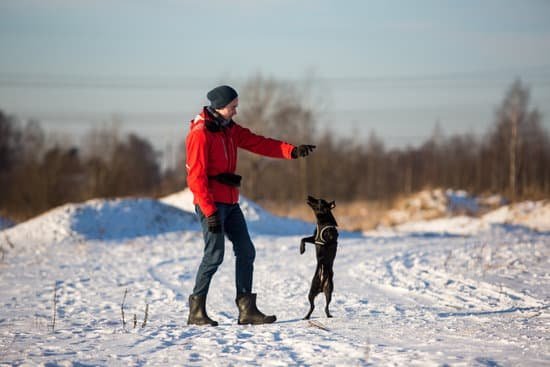A service dog is a specially trained canine partner that plays a vital role in assisting individuals with disabilities. These dogs are not just pets; they are highly skilled helpers that provide invaluable support and companionship to their handlers. Whether it’s guiding the visually impaired, alerting to seizures, providing stability for those with mobility challenges, or performing other tasks to enhance independence, service dogs are essential for many people with disabilities.
The importance of service dog training cannot be overstated. Proper training is what transforms regular dogs into reliable and effective service animals. It is through this training process that these dogs learn the specialized tasks that will assist their handlers in their day-to-day lives.
Training also ensures that the dog can navigate various public spaces with confidence and adhere to proper behavior guidelines. The dedication and expertise involved in training a service dog maximize their potential and enable them to fulfill their vital role in assisting individuals with disabilities.
Transforming an ordinary dog into a highly skilled service companion is no easy feat. The training process consists of multiple steps designed to develop the necessary skills and behaviors in these special animals. It begins with basic obedience training, teaching them foundational commands such as sit, stay, heel, and come.
From there, they move on to specialized task training, where they learn specific actions tailored to meet their handler’s needs. Additionally, public access training ensures that the dog can behave appropriately in various real-world environments while maintaining focus on their handler’s needs.
While the duration of service dog training can vary depending on several factors, including breed, age, temperament, complexity of tasks required, and the individual needs of the handler, there is a typical timeline for this process. It starts from puppyhood and progresses through different milestones and phases until the canine reaches full-fledged service dog status. However, it’s important to note that variations exist based on individual circumstances and the commitment of both handler and trainer.
The Importance of Service Dog Training
Proper training is essential for service dogs to maximize their potential and ensure their reliability in assisting individuals with disabilities. Service dogs play a crucial role in providing physical assistance, emotional support, and independence to their handlers. Without adequate training, these dogs may not be able to perform the tasks needed to assist their handlers effectively.
Service dog training involves a multi-step process that includes basic obedience training, specialized task training, and public access training. Basic obedience training lays the foundation for good behavior and includes commands such as sit, stay, and heel. This helps service dogs follow instructions and behave appropriately in various situations.
Specialized task training focuses on teaching the dog specific tasks that are tailored to the handler’s needs. For example, a service dog for someone with mobility issues may be trained to retrieve items, open doors, or provide stability while walking. These tasks require careful instruction and reinforcement to ensure that the dog can perform them reliably.
Public access training is crucial for service dogs to navigate different environments and remain calm and focused. They must learn how to behave appropriately in places like restaurants, stores, airports, and other public spaces. This type of training also includes desensitization to distractions such as loud noises or crowded areas.
The duration of service dog training can vary depending on several factors. The breed of the dog plays a role as some breeds may be more naturally inclined towards certain tasks or have characteristics that make them easier to train. The age of the dog also matters since younger dogs tend to pick up new skills faster than older ones.
Furthermore, factors such as the complexity of tasks required by the handler’s specific needs can affect the length of training. More complex tasks may require additional time for both instructing the dog and reinforcing their understanding of those tasks.
| Factors Affecting Training Duration | Description |
|---|---|
| Breed | Certain breeds may be more naturally inclined towards certain tasks or have characteristics that make them easier to train. |
| Age | Younger dogs tend to pick up new skills faster than older ones. |
| Temperament | Dogs with a calm and focused temperament may require less time for training. |
| Complexity of tasks | The more complex the tasks required by the handler’s specific needs are, the longer the training may take. |
| Handler’s consistency and commitment | A consistent and committed handler who adheres to a structured training program can expedite the training process. |
The Training Process
The training process is a crucial component in transforming a regular dog into a highly skilled service dog. It involves several steps, including basic obedience training, specialized task training, and public access training. Each stage of the process is important in ensuring that the dog is able to fulfill its role effectively and reliably.
Basic obedience training forms the foundation of service dog training. This stage focuses on teaching the dog essential commands such as sit, stay, come, and heel. These commands are not only important for maintaining control over the dog but also serve as building blocks for more advanced skills later on. Basic obedience training also helps establish a strong bond between the handler and the dog, creating trust and effective communication.
Specialized task training is another key aspect of service dog training. During this phase, the dog learns specific tasks tailored to assist their handler with their disabilities. For example, a service dog for someone with mobility issues may be trained to retrieve objects, open doors, or provide balance support. Meanwhile, a service dog for someone with hearing impairments may be trained to alert their handler to sounds or people approaching from behind.
Public access training is essential for ensuring that service dogs can navigate various environments confidently and safely. They learn how to behave appropriately in public settings while remaining focused on their handler’s needs. This includes ignoring distractions and obeying commands even in busy or stressful situations. Service dogs must also be familiar with different types of transportation such as buses, trains, or airplanes to accompany their handlers wherever they go.
It is worth noting that the duration of each step in the training process can vary depending on factors such as the breed of the dog, age, temperament, complexity of tasks required, and the specific needs of the handler. Some breeds may have a predisposition for certain tasks or exhibit certain behaviors that make them suitable candidates from an early age.
Additionally, individual differences in learning speed and response to training methods can also impact how long it takes for a dog to progress through the training process.
Overall, the multi-step training process for service dogs involves basic obedience training, specialized task training, and public access training. Each step is essential in shaping a regular dog into a highly skilled service dog capable of assisting individuals with disabilities.
The duration of the training can vary depending on several factors, but with patience and commitment from both the handler and the dog, successful service dog training is achievable, resulting in a lifelong partnership that brings immeasurable benefits to individuals with disabilities.
Factors Affecting the Duration of Service Dog Training
There are several factors that can impact the duration of service dog training. One important factor is the breed of the dog. Certain breeds are known for their intelligence and trainability, making them more suitable for service work. Breeds such as Golden Retrievers, Labrador Retrievers, and German Shepherds are commonly used as service dogs due to their calm temperament and ability to learn complex tasks. On the other hand, some breeds may require more time and effort to train effectively.
Another factor to consider is the dog’s age. Starting training at a young age can be advantageous as puppies have a natural inclination to learn and adapt. It allows them to develop good habits early on and helps them become acclimated to various environments and social settings. However, older dogs can also be trained successfully with patience and consistent training methods.
The temperament of a dog is crucial in determining how long their training will take. Dogs with a calm and stable temperament tend to progress more quickly during training compared to those who are easily distracted or anxious. A well-balanced dog will be better equipped to handle potentially stressful situations that they may encounter while working as a service dog.
The complexity of tasks required by a service dog also affects the training duration. Basic obedience commands such as sit, stay, and heel are usually taught during early stages of training. However, specialized tasks like opening doors, retrieving items, or providing medical alerts may take longer to teach depending on their complexity.
Lastly, the specific needs of the handler play a significant role in determining how long it takes for a service dog to complete its training. Some individuals may require specific tasks tailored to their disability which may necessitate additional time for training. It is important for the trainer to understand the handler’s needs and goals in order to create a training plan that addresses their unique requirements.
Average Timeline for Service Dog Training
Training a service dog is a complex and time-consuming process that requires dedication, patience, and consistency. The timeline for service dog training can vary depending on several factors such as the breed, age, temperament of the dog, the complexity of tasks required, and the specific needs of the handler.
While there is no set timeframe for training a service dog, it generally takes an average of 1.5 to 2 years for a dog to progress from puppyhood to full-fledged service dog status.
The training process for a service dog can be divided into different milestones and phases.
- Puppyhood (0-6 months): During this stage, the focus is primarily on socialization and basic obedience training. The puppy learns to interact with different people, animals, and environments while developing important skills like sitting, staying, walking on a leash, and coming when called.
- Basic Obedience Training (6-12 months): This phase builds upon the foundation laid during puppyhood. The dog learns more advanced commands such as lying down, waiting patiently, and behaving appropriately in public settings. Emphasis is also placed on impulse control, focusing on the handler’s commands amidst distractions.
- Specialized Task Training (12-18 months): At this stage, the dog starts learning specific tasks that will assist their handler in navigating their disability. Tasks may include retrieving items, opening doors, turning lights on/off, or alerting to medical conditions like seizures or low blood sugar levels.
- Public Access Training (18-24 months): Public access training focuses on acclimating the service dog to various public environments while maintaining appropriate behavior and manners at all times. This includes remaining calm around crowds or loud noises and ignoring food or other distractions.
It’s important to note that these timelines are just general guidelines and may vary depending on individual circumstances. Factors like previous obedience training experience or inconsistency in training can affect the duration of service dog training. Handlers who are dedicated, consistent, and employ professional guidance are more likely to achieve successful training outcomes within a reasonable timeframe.
In the next section, we will discuss how the duration of service dog training can vary depending on individual circumstances and provide tips for effective training practices that can help streamline the process.
Variations in Training Duration
Starting from Scratch vs. Pre-existing Obedience Skills
One major factor that can affect the duration of service dog training is whether the dog is starting from scratch or already possesses some obedience skills. If a dog has already undergone basic obedience training and has a solid foundation in behaviors such as sit, stay, and come, this can significantly reduce the amount of time needed for training.
In these cases, the focus would primarily be on teaching specialized tasks related to the handler’s disability and public access training.
On the other hand, if a dog is starting from scratch with no prior obedience training, it will require more time and effort to progress through each stage of training. The initial phase of teaching basic commands and manners will need to be thorough before moving on to specialized task training. However, it’s important to note that even dogs with no pre-existing obedience skills can still become successful service dogs with proper training and consistency.
The Importance of Commitment and Consistency in Training
Another critical factor that affects the duration of service dog training is the commitment and consistency of training provided by the handler. Training a service dog requires a considerable investment of time, energy, and patience. Consistent daily practice sessions are crucial for reinforcing learned behaviors and skills.
Handlers must also be committed to attending regular professional training sessions with experienced trainers who specialize in service dog training. These professionals provide guidance, support, and expertise that help ensure both the handler and the dog are progressing effectively during their journey.
It’s important for potential handlers to understand that inconsistency in training or skipping sessions can lead to setbacks in progress and prolong the overall training timeline. Dedicating oneself fully to the process is key to maximizing efficiency throughout every stage of service dog development.
Realistic Expectations for Training Duration
When embarking on service dog training, it is essential for handlers to set realistic expectations regarding the timeline for achieving their goals. While each individual dog and training program is unique, it generally takes anywhere from six months to two years to fully train a service dog.
It’s also important to remember that training doesn’t stop once a dog has become a certified service dog. Continued practice and reinforcement of skills are necessary to maintain proficiency throughout the dog’s working life. By setting realistic expectations and understanding the commitment required, handlers can approach their training journey with patience and determination, ultimately leading to success in maximizing the potential of their service dogs.
Best Practices for Effective Service Dog Training
Professional Guidance
One of the most important aspects of effective service dog training is seeking professional guidance. While it may be tempting to try and train a service dog independently, working with a professional trainer who specializes in service dog training can greatly improve the chances of success. These trainers have the knowledge and experience to develop a training plan tailored to the specific needs of both the dog and the handler.
They can provide guidance on techniques, exercises, and troubleshooting throughout the training process. Additionally, working with a professional trainer ensures that the training follows ethical guidelines and best practices for service dogs.
Setting Realistic Expectations
It is crucial for handlers embarking on their service dog training journey to set realistic expectations. Service dog training is a time-consuming and challenging process, requiring dedication, consistency, and patience. It is essential to understand that progress may not always be linear, as dogs learn at their own pace.
Handlers should avoid comparing their dog’s progress to others as each dog is unique and may require more or less time to reach certain milestones. Setting achievable goals and celebrating small victories along the way can help maintain motivation and positivity throughout the training journey.
Implementing a Structured Training Program
To ensure effectiveness in service dog training, implementing a structured program is vital. A structured program provides clear objectives, establishes routines, and maintains consistency in training sessions. It helps establish boundaries for both the handler and the dog, setting them up for success in public access situations.
Incorporating regular obedience exercises into daily routines strengthens foundational skills necessary for advanced task training. Breaking down complex tasks into smaller steps allows for gradual learning and builds confidence in both handler and dog.
By following these best practices – seeking professional guidance, setting realistic expectations, and implementing a structured training program – handlers can increase their chances of successful service dog training outcomes. The journey may be challenging at times but with commitment and perseverance, the bond between handler and service dog can grow stronger and lead to a remarkable transformation in the lives of individuals with disabilities.
Case Studies
To truly understand the dedication and perseverance required for successful service dog training, it is valuable to delve into real-life case studies that showcase the different timelines and successes in various scenarios. These examples highlight the transformative power of proper training and the profound impact a well-trained service dog can have on individuals with disabilities.
One such case study involves a Golden Retriever named Max who was trained to assist a handler with mobility issues. Max began his training as a puppy, starting with basic obedience commands such as sit, stay, and heel. As he grew older, more specialized tasks were incorporated into his training, including retrieving objects, turning on light switches, and opening doors. Through consistent training sessions that focused on positive reinforcement techniques, Max gradually developed into a skilled service dog.
Another example involves a Labrador Retriever named Luna who was trained to provide support to an individual with Post-Traumatic Stress Disorder (PTSD). Luna’s training initially comprised obedience exercises to establish good behavior in various settings.
As Luna progressed through her training, she learned specific tasks tailored to her handler’s needs, such as interrupting anxiety attacks by nudging and providing deep pressure therapy during moments of distress. The duration of Luna’s training readjusted due to occasional setbacks; however, her gradual progress ultimately led to her successful completion as a service dog.
These case studies demonstrate that the timeline for service dog training can vary greatly depending on individual circumstances. Factors such as the complexity of tasks needed and the consistency of training provided play significant roles in determining how long it takes for a service dog to be fully trained. In each case study mentioned above, the dogs required several months or even years of consistent practice before they were ready to fulfill their duties as reliable service dogs.
By sharing these case studies, we aim to illustrate the lifelong commitment required by both handlers and their canine partners during the service dog training process. It highlights the challenges, setbacks, and triumphs experienced, all while emphasizing the transformative power of patience and dedication in achieving success. These real-life examples showcase the immense benefits that well-trained service dogs bring to their handlers’ lives and inspire others who are embarking on their own training journey.
Conclusion
In conclusion, the training of a service dog is a comprehensive and multi-step process that requires patience, commitment, and dedication. Throughout this article, we have delved into the importance of proper training in maximizing a service dog’s potential and ensuring their reliability in assisting individuals with disabilities. The training process involves various stages, including basic obedience training, specialized task training, and public access training.
Factors such as breed, age, temperament, complexity of tasks required, and the handler’s specific needs can influence the duration of service dog training. While there is an average timeline for service dog training from puppyhood to full-fledged service dog status, it is important to note that variations exist depending on individual circumstances. The commitment and consistency of training provided by the handler also play a significant role in achieving successful outcomes.
To ensure effective service dog training, it is crucial for handlers to seek professional guidance and set realistic expectations. Implementing a structured training program will help both the dog and handler progress steadily towards their goals. Additionally, case studies shared in this article highlight the different timelines and successes experienced during service dog training journeys.
In summary, patience and commitment are key when it comes to service dog training. A well-trained service dog can bring life-changing benefits to individuals with disabilities by providing assistance and support in everyday tasks. By understanding the importance of proper training and implementing best practices outlined in this article, handlers can successfully navigate this journey towards creating a strong bond with their loyal companions who make a significant impact on their lives.
Frequently Asked Questions
Is it ever too late to train a dog to be a service dog?
It is generally never too late to train a dog to be a service dog, although the ease and success of training can vary depending on the dog’s age and previous experiences. Puppies are often preferred for service dog training as they tend to be more adaptable and eager to learn.
However, adult dogs can also be trained successfully if they possess the right qualities such as intelligence, obedience, and a calm temperament. Older dogs with extensive prior training may require some additional time and effort to unlearn any unwanted habits or routines, but with patience and proper guidance, they can still become excellent service dogs.
What is the best age to train a service dog?
The best age to begin training a service dog is usually during puppyhood, ideally between 8-12 weeks of age. This is the stage when puppies are most receptive to learning new commands and socialization experiences. Early training establishes a solid foundation that will benefit them throughout their entire life as a service dog.
Starting at this age allows trainers to shape desirable behaviors effectively while minimizing the development of any unwanted habits or fear-based reactions. However, every dog is different, and individual characteristics should also be considered when determining the best age for training.
How long does it take to train a dog to be a therapy dog?
The process of training a therapy dog varies in duration depending on various factors such as the type of therapy work required and the individual dog’s aptitude and progress. On average, it takes around 6 months to 1 year for a well-rounded therapy dog certification, but this timeline can range widely based on each specific case.
Training involves teaching basic commands like sit, stay, heel, as well as more advanced behaviors like interacting calmly with strangers or staying focused in distracting environments. Additionally, therapy dogs must undergo specialized training for tasks related to their intended role such as supporting individuals with emotional or physical needs or providing comfort in healthcare settings.

Welcome to the blog! I am a professional dog trainer and have been working with dogs for many years. In this blog, I will be discussing various topics related to dog training, including tips, tricks, and advice. I hope you find this information helpful and informative. Thanks for reading!





